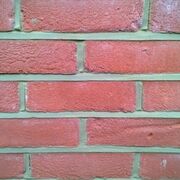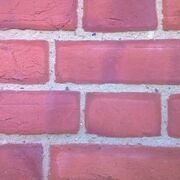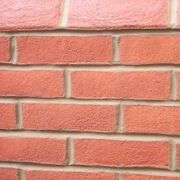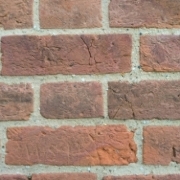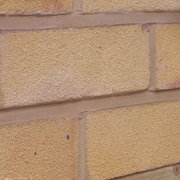WE COVER MANY ASPECTS OF DIFFERENT STYLES OF POINTING SUCH AS FLUSH (normally used with historic lime mortars) WEATHER STRUCK, BARREL etc......................
Method:
When raking out old mortar we use 5" angle grinders with 6mm mortar raking diamond blades with DUST extraction units which gives a clean cut to the top and bottom of the joint ready for new mortar application. In some cases power tools are not permitted so hand tools are used such as comb hammers and dogging tools. Before applying new mortar to the brickwork it is wet down using a spray applicator to wash away any existing dust and to give maximum hold to the brickwork. (This operation is not necessary if masonry is to be cleaned prior to pointing as masonry will be raked out before cleaning commences).
How deep should the joints be raked out ???
Some builders who do pointing occasionally will only scratch the old mortar back to get a key for the new mortar to stick. THIS IS WRONG if this method does occur over a short time the pointing will blow due to the different weather conditions i.e.: sun, rain & frost and will be a waste of time and money.
When raking out:
We take old mortar out to a depth of 18mm to 20mm as standard unless otherwise instructed.
Applying mortar:
We apply the new mortar manually with hand tools.
We apply vertical joints with a cut down slasher and the horizontal joints with a tray and slasher. This is a skilled operation.
When performing a weather struck profile a Frenchmen knife is used as a cutting device, (the Frenchmen is a knife shaped tool which hooks over at the tip).
Also a rule is used to give a straight cut at the bottom of the joint.
What does the new mortar consist of ?
The new mortar is 2.1.1 (2 soft sand to 1 sharp sand and 1 hydraulic lime 3.5 as standard on lime mortar built properties),
and 6.1.1 (6 sand to 1 cement 1 hydrated lime as standard on sand and cement built properties) or as otherwise instructed.
Historic lime mortar usually consists of soft sand, sharp sand and N.H.L 3.5 hydraulic lime. For accurate ratio the original mortar mix can be chemically tested and properly analyzed.
For information on HYDRAULIC LIME MORTAR please click the lime mortar tab on the menu.
A brief history lesson:
POINTING is the mortar between bricks. A more accurate definition is that it is the visible edge of the mortar-joint. The mortar is normally a mix of lime and sand, or from the 1920s cement and sand. A colouring is sometimes added. Black mortar uses crushed ash rather than sand. In Georgian, Victorian and Edwardian houses, the pointing between bricks and stone had a major effect on the appearance of the buildings. The emphasis was always supposed to be on the brickwork, rather than the pointing. The idea was no visible mortar. This could be achieved by:
•using high quality engineering bricks
•'rubbed' brickwork, where the bricks were rubbed together until they fitted closely together, leaving a joint of 2-3mm
•Tuck pointing, where a line of white, putty mortar was 'tucked' into a slot cut in stained mortar
•stained mortar to hide the pointing
Most houses would have been finished with flush or slightly recessed pointing. Styles of pointing included flush, tuck, bucket handle and recessed pointing. Weatherstruck pointing was never used.

